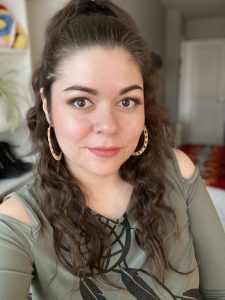
| by Autumn Epple My time spent in the past year as a GRASAC Research Assistant has been one I look back on with fondness. As a graduate student in the History program at the University of Toronto, I saw GRASAC as a way to utilize my passion for public history while working towards my degree. As an RA, I managed material culture records from institutions such as the British Museum, the Royal Ontario Museum, and the Peabody Museum of Archaeology and Ethnology. Since I am Kanien’kehá:ka, Haudenosaunee objects were of particular interest. I recently completed my major research paper, A Kanien’kehá:ka Call to Arms in “the Land Where the Partridge Drums”: Akwesasne in the Second World War. The inspiration for this paper was my grandfather, a paratrooper who enlisted underage and was revealed posthumously to be one of the Akwesasne Mohawk Code Talkers. Both he and my grandmother were veterans who continued to protect their community in the years after the war. The pandemic meant I was unable to physically go to Akwesasne to visit family and access archival records, but I made do with what I did have access to from Toronto. My upcoming research in my PhD studies at York University will study the life of Louis Cook, an Afro-Indigenous leader known to be the highest ranking person of colour in the American forces during the War of Independence. Despite this considerable achievement, Cook is a relatively unknown figure. I plan to investigate how he is viewed by both colonial states and his own people. Through this research, I am hoping to shed light on the importance of BIPOC historical memory, as well as add to Afro-Indigenous representation in historical scholarship. I hope to continue to be a part of GRASAC in the future. |
